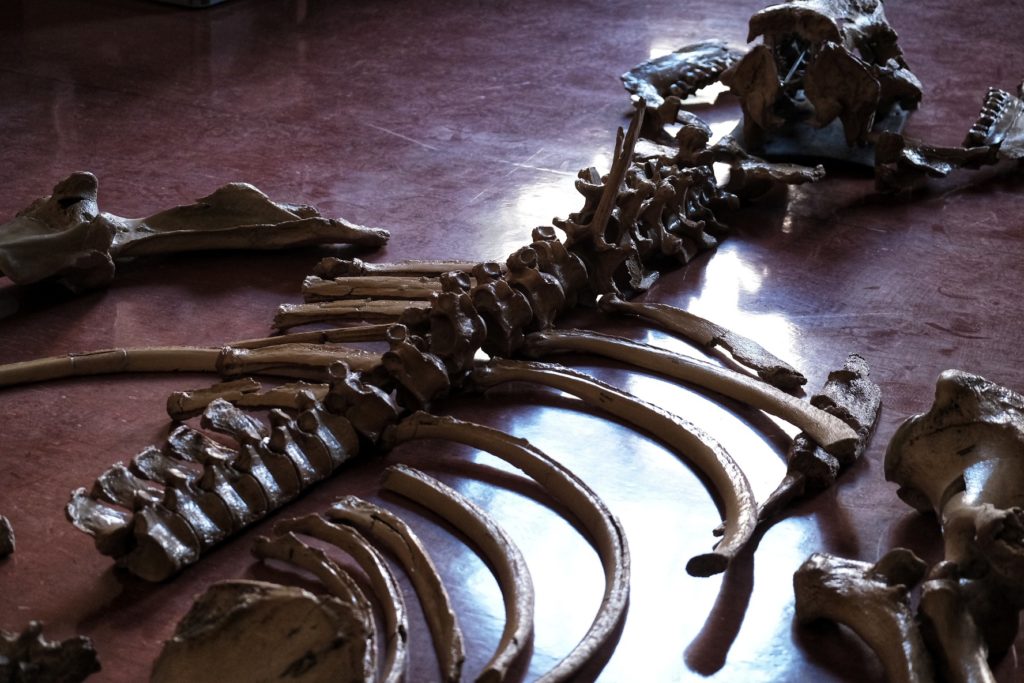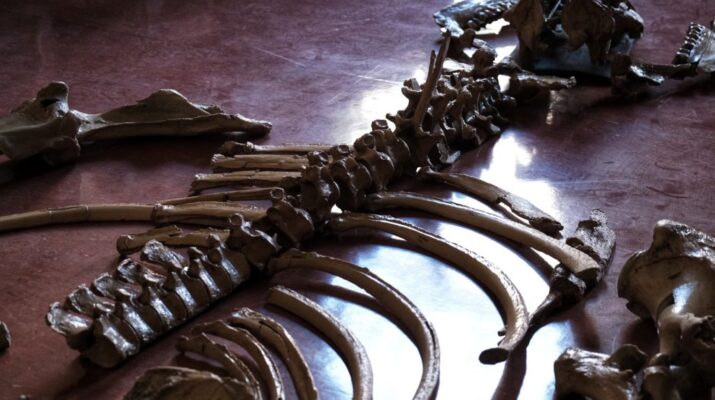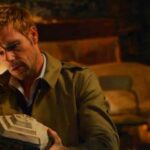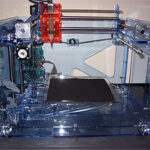

In May 2016, a construction team in Poland was working on the initial stages of building a highway, when they stumbled across a skeleton. According to Dr Krzysztof Stefaniak from the University of Wrocław, “When the skeleton was first discovered, the builders initially wanted to throw it away[.]” Fortunately, “…there was a football match on and they left to watch it”, at which point, Dr. Stefaniak and a team of paleontologists stepped in and took over. Ever since, Dr. Stefaniak and others from the University of Wroclaw have been reconstructing the skeleton: originally thinking they’d found a wooly rhinoceros, the paleontological team soon discovered it was, in fact, the far less common Stephanorhinus, or Merck’s rhinoceros.
University of Wroclaw’s Dr Krzysztof Stefaniak (L) and colleague Adam Kotowski examine their rare find
Thankfully, now that it has actually unearthed and recovered the specimen, the team doesn’t have to rely solely on traditional storage methods – or luck – to keep what it has found. They’ve also been using a 3D printer to backup their research, gradually printing the Merck’s rhinoceros, bone by bone, so that they’ll have a full copy of the skeleton in addition to the reconstructed original. The team is applying techniques that have been used for some time now to produce replicas of dinosaur skeletons. Recently, the same genre of 3D imaging tech has been used to create models of sauropod embryos by studying dinosaur egg fragments with high resolution 3D scanning and imaging software. And 3D printing involving rhinoceroses has frequently been in the news as well, usually involving attempts to replace poached ivory with AM alternatives.

These old bones can rest assured now that the responsibility for their preservation is being shared by 3D printing
For those of us who don’t have to worry about keeping a prehistoric rhinoceros skeleton intact: it may seem that, when you already have the original specimen – especially one in as unusually good shape as the one the team in Poland found – 3D printing a replica is just creating a lot of extra work for yourself. Why not just keep the original for yourself, and let everyone else who isn’t lucky enough to find one print out their own replicas? For one thing, as Dr. Stefaniak points out, “It is important to use [our specimen] to make the results of our research widely available.” The security of knowing that they have a 3D printed backup meant the team was happy to send a sample of their Merck’s rhinoceros’s teeth to the London Museum of Natural History for additional analysis, which has already paid dividends: based on their findings, the scientists in London, along with Dr. Stefaniak’s team, were able to improve their knowledge of the animal’s diet, which, in turn, led them to add to their understanding of Stephanorhinus’s habitat.
For another thing, as Dr. Stefaniak notes, climate change is rapidly altering the literal landscape that paleontologists use as a basis for their analyses. The more that continues, the more important it is, not only to preserve all existing findings, but to add to the repertoire of virtual imagining techniques to allow the study of the past to take place with as little future effect on the physical environment as possible. This is no small advantage, especially considering how important fossils are to all other aspects of studying the longest-term climate trends. That is, not only can 3D printing help scientists understand how humans have affected their surroundings, historically, but it can also, equally, help humans in general to have less of a detrimental impact in the present, in all the processes we’ve developed to learn about ourselves and our environment.
Veterinarian/paleontologist Adam Kotowski, delicately reconstructing one of the world’s best-preserved Merck’s rhinoceros fossils
When it comes to 3D real estate visualization in the USA, our service provides the perfect solution for bringing property listings to life. Through our platform, you can easily access cutting-edge 3D renderings that showcase your real estate projects in a way that attracts potential buyers and investors. Whether it's residential, commercial, or mixed-use properties, our team of experts uses advanced technology to create immersive visualizations that highlight the best features of your property, making it easier for clients to imagine the space as their own.
Through our website, you can quickly get high-quality 3D real estate visualizations that are tailored to your specific needs. With our help, you'll stand out in the competitive real estate market by offering potential buyers a realistic, interactive view of your property. Our efficient process ensures a fast turnaround time, while our attention to detail guarantees that every aspect of the property is represented accurately, giving you a powerful marketing tool to promote your real estate listings.






